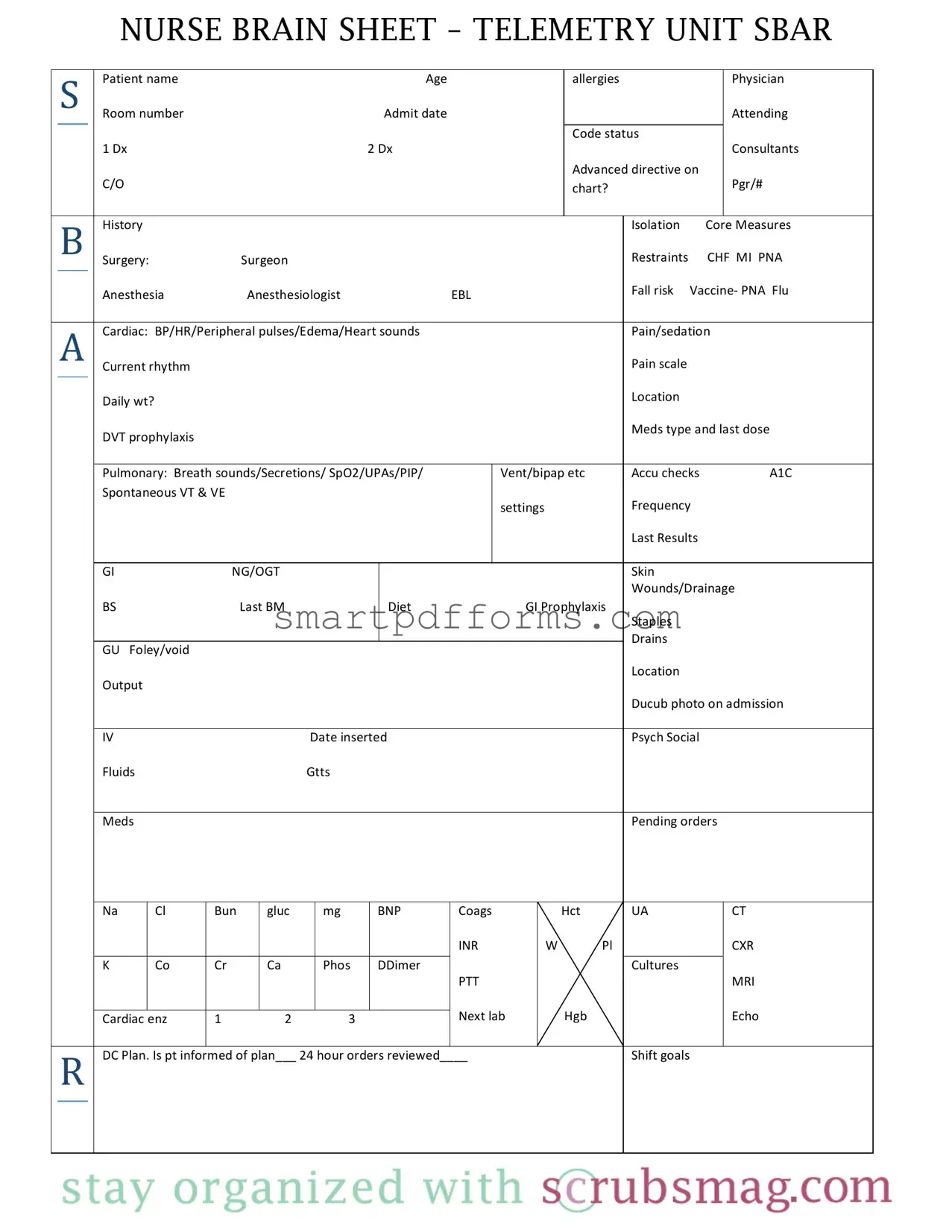Blank Sheet Telemetry PDF Template
The Sheet Telemetry form serves as a comprehensive tool designed for use in telemetry units, primarily for monitoring vital patient information in a clinical setting. It encompasses a wide array of data points including patient demographics, medical history, diagnosis (Dx), consultations, medications, and specific metrics related to cardiac and pulmonary status, among others. This form aids healthcare professionals in maintaining a detailed and organized overview of a patient's condition, facilitating efficient communication and care planning.
To ensure that patient care is managed efficiently and effectively, it's critical to complete the Sheet Telemetry form with the most current and accurate information. Click the button below to start filling out the form and contribute to optimal patient care.

